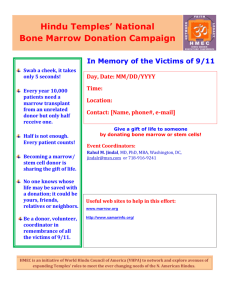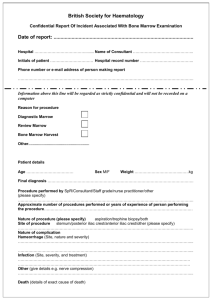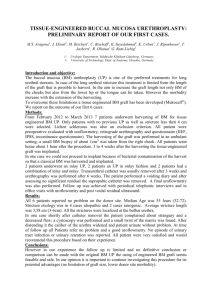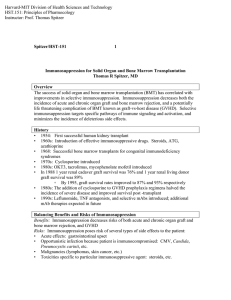Homework Set 1
advertisement
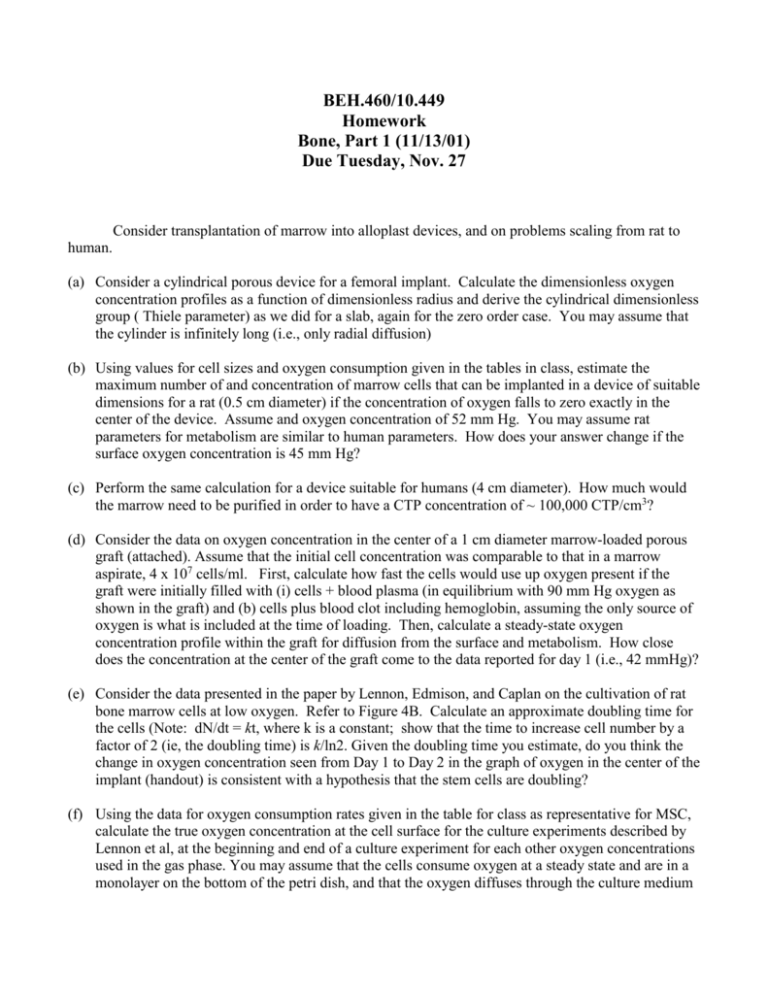
BEH.460/10.449 Homework Bone, Part 1 (11/13/01) Due Tuesday, Nov. 27 Consider transplantation of marrow into alloplast devices, and on problems scaling from rat to human. (a) Consider a cylindrical porous device for a femoral implant. Calculate the dimensionless oxygen concentration profiles as a function of dimensionless radius and derive the cylindrical dimensionless group ( Thiele parameter) as we did for a slab, again for the zero order case. You may assume that the cylinder is infinitely long (i.e., only radial diffusion) (b) Using values for cell sizes and oxygen consumption given in the tables in class, estimate the maximum number of and concentration of marrow cells that can be implanted in a device of suitable dimensions for a rat (0.5 cm diameter) if the concentration of oxygen falls to zero exactly in the center of the device. Assume and oxygen concentration of 52 mm Hg. You may assume rat parameters for metabolism are similar to human parameters. How does your answer change if the surface oxygen concentration is 45 mm Hg? (c) Perform the same calculation for a device suitable for humans (4 cm diameter). How much would the marrow need to be purified in order to have a CTP concentration of ~ 100,000 CTP/cm3? (d) Consider the data on oxygen concentration in the center of a 1 cm diameter marrow-loaded porous graft (attached). Assume that the initial cell concentration was comparable to that in a marrow aspirate, 4 x 107 cells/ml. First, calculate how fast the cells would use up oxygen present if the graft were initially filled with (i) cells + blood plasma (in equilibrium with 90 mm Hg oxygen as shown in the graft) and (b) cells plus blood clot including hemoglobin, assuming the only source of oxygen is what is included at the time of loading. Then, calculate a steady-state oxygen concentration profile within the graft for diffusion from the surface and metabolism. How close does the concentration at the center of the graft come to the data reported for day 1 (i.e., 42 mmHg)? (e) Consider the data presented in the paper by Lennon, Edmison, and Caplan on the cultivation of rat bone marrow cells at low oxygen. Refer to Figure 4B. Calculate an approximate doubling time for the cells (Note: dN/dt = kt, where k is a constant; show that the time to increase cell number by a factor of 2 (ie, the doubling time) is k/ln2. Given the doubling time you estimate, do you think the change in oxygen concentration seen from Day 1 to Day 2 in the graph of oxygen in the center of the implant (handout) is consistent with a hypothesis that the stem cells are doubling? (f) Using the data for oxygen consumption rates given in the table for class as representative for MSC, calculate the true oxygen concentration at the cell surface for the culture experiments described by Lennon et al, at the beginning and end of a culture experiment for each other oxygen concentrations used in the gas phase. You may assume that the cells consume oxygen at a steady state and are in a monolayer on the bottom of the petri dish, and that the oxygen diffuses through the culture medium to reach the cells. The authors did not report the total volume of medium used per dish; you may assume it provided a medium depth of 5 mm.

